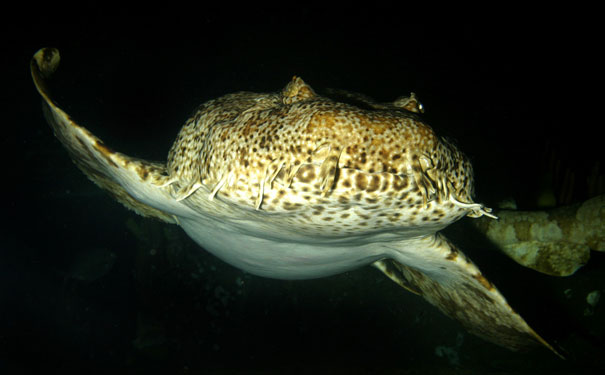
Image: Shutterstock
If you can get close enough to a shark to test its eyesight, it may help you understand how healthy its environment is.
Researchers from the University of Western Australia and the University of Queensland have studied how four species of wobbegong sharks have adapted to seeing their environment. Wobbegongs, also known as carpet sharks, are a common temperate water shark species that lies in wait for its prey rather than actively seeking it.
Professor Shaun Collin from the University of Western Australia says that wobbegongs could be used to monitor the environment. “Almost nothing is known about the behaviour of wobbegongs, but what our research on the visual systems can do is predict their behaviour, so we look at the shark’s visual system at the level of the photoreceptors, which are the cells that detect light.” He stated in the press release.
“If you see these common species interacting and behaving normally in a particular environment, this can be a good indicator of the health of that part of the ocean.”
The wobbegong sharks species studied were the dwarf spotted wobbegong (Orectolobus parvimaculatus and the western wobbegong (Orectolobus hutchinsi), both of which are found off the coast of Western Australia; and the ornate wobbegong (Orectolobus ornatus) and the spotted wobbegong (Orectolobus maculates), which are found off the Queensland coast.
The researchers found that the eyesight of the spotted and dwarf spotted wobbegongs was better adapted to low light, while the western and ornate wobbegongs were suited to both day and night conditions. Dr Susan Theiss from the University of Queensland says these adaptations are linked to factors such as whether they have a shallow or deep water habitat, their diet and their reproductive behaviours.
“The spotted and dwarf spotted wobbegongs are probably more active in low-light conditions such as night time, or in the early morning or late afternoon, whereas the western and ornate wobbegongs are visually suited to a range of light conditions.”
The research may help scientists predict how other sharks and rays behave, and how they can survive in different environments.






